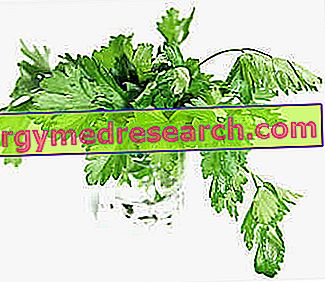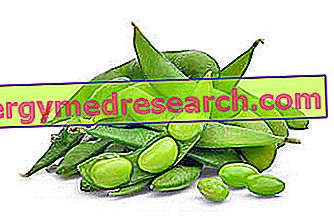Use in the kitchen
Parsley ( Petroselinum hortense ) is a biennial plant. It grows wild in South Eastern Europe and is widely cultivated in all temperate countries. The term parsley derives from the Greek petrosélinon, from pétra (stone) + sélinon (celery), properly celery that grows on stones.
In the kitchen the leaves are used, mainly those sprouted in the first year, because they are more developed and valuable than those of the second.

A fresh parsley is recognized by the color, lively and brilliant, and by the pleasant aroma that it gives off. It should be kept in the fridge and consumed within a few days. If it has sufficiently long stems, the parsley stays green and fresh longer when it is soaked in a jar together with a cork stopper.
Nutritional properties
A polyvalent plant therefore, made even more precious by the excellent vitamin content (it contains good doses of the antioxidant trio ascorbic acid, carotenoids and tocopherol) and minerals (calcium, iron, sulfur, copper, phosphorus). The habit of enriching one's own food with a pinch of parsley is therefore a simple but healthy gesture, especially for those who follow a diet low in raw vegetables and fresh fruit. Chewing a few leaves of parsley is also a clever move to combat halitosis, neutralizing the less pleasant garlic and onion flavor with its aroma.
To learn more: Parsley - Calories and Nutritional Table
Folk medicine and phytotherapy
In the medical field, both roots and aerial parts (fruits, leaves) are used, both rich in flavonoids, furanocumarine and an essential oil more concentrated in seeds. Due to the presence of furanocumarine, the parsley extracts can give rise to photosensitizing actions, causing dermatitis.
Phytotherapy exploits its diuretic, carminative, emmenagogue, vasodilatory and remineralizing properties, which make it useful in case of water retention, anemia, dyspepsia, hepatopathies, gout and urinary tract disorders. The simultaneous intake of a lot of water enhances its diuretic and purifying properties.
The use of concentrated parsley extracts is contraindicated in case of renal inflammation, in pregnancy and in the presence of cardiac or renal dysfunction edema. The recommendation to avoid their use during gestation is related to the ability to cause uterine contractions and induce fetal tachycardia.
To learn more: Uses of Parsley in Herbal Medicine
Vegan Parsley Green Sauce - Video Recipe
Vegan Green Sauce - Parsley
X Problems with video playback? Reload from YouTube Go to Video Page Go to Video Recipes Section Watch the video on youtube



